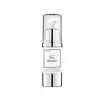What's inside
What's inside
 Key Ingredients
Key Ingredients

 Benefits
Benefits

 Concerns
Concerns

No concerns
 Ingredients Side-by-side
Ingredients Side-by-side

Centella Asiatica Extract 40.4%
CleansingMelia Azadirachta Leaf Extract
Skin ConditioningMelia Azadirachta Flower Extract
Skin ConditioningCentella Asiatica Leaf Extract 7.76%
Skin ConditioningCentella Asiatica Root Extract 7.76%
Skin ConditioningGlycerin
HumectantDicaprylyl Carbonate
EmollientWater
Skin ConditioningButylene Glycol
HumectantNiacinamide
SmoothingVinyldimethicone
1,2-Hexanediol
Skin ConditioningCaprylyl Methicone
Skin ConditioningHydrogenated Polydecene
EmollientPentylene Glycol
Skin ConditioningHydroxyethyl Acrylate/Sodium Acryloyldimethyl Taurate Copolymer
Emulsion StabilisingPanthenol
Skin ConditioningDimethiconol
EmollientAcrylates/C10-30 Alkyl Acrylate Crosspolymer
Emulsion StabilisingPolymethylsilsesquioxane
Tromethamine
BufferingGlyceryl Acrylate/Acrylic Acid Copolymer
HumectantCetearyl Olivate
Xanthan Gum
EmulsifyingEthylhexylglycerin
Skin ConditioningSorbitan Olivate
EmulsifyingSodium Phytate
Madecassoside
AntioxidantDipropylene Glycol
HumectantBacillus Ferment
Skin ConditioningTocopherol
AntioxidantAsiaticoside
AntioxidantMadecassic Acid
Skin ConditioningAsiatic Acid
Skin ConditioningCentella Asiatica Extract 40.4%, Melia Azadirachta Leaf Extract, Melia Azadirachta Flower Extract, Centella Asiatica Leaf Extract 7.76%, Centella Asiatica Root Extract 7.76%, Glycerin, Dicaprylyl Carbonate, Water, Butylene Glycol, Niacinamide, Vinyldimethicone, 1,2-Hexanediol, Caprylyl Methicone, Hydrogenated Polydecene, Pentylene Glycol, Hydroxyethyl Acrylate/Sodium Acryloyldimethyl Taurate Copolymer, Panthenol, Dimethiconol, Acrylates/C10-30 Alkyl Acrylate Crosspolymer, Polymethylsilsesquioxane, Tromethamine, Glyceryl Acrylate/Acrylic Acid Copolymer, Cetearyl Olivate, Xanthan Gum, Ethylhexylglycerin, Sorbitan Olivate, Sodium Phytate, Madecassoside, Dipropylene Glycol, Bacillus Ferment, Tocopherol, Asiaticoside, Madecassic Acid, Asiatic Acid
Water
Skin ConditioningCoco-Caprylate
EmollientMethylpropanediol
SolventGlycerin
HumectantEctoin
Skin ConditioningButyrospermum Parkii Butter
Skin ConditioningIsoamyl Laurate
EmollientPotassium Cetyl Phosphate
EmulsifyingPanthenol
Skin ConditioningBakuchiol
AntimicrobialCamellia Sinensis Leaf Extract
AntimicrobialAllantoin
Skin ConditioningResveratrol
AntioxidantLecithin
EmollientCaffeine
Skin ConditioningSodium Acrylate/Sodium Acryloyldimethyl Taurate Copolymer
Emulsion StabilisingIsohexadecane
EmollientCarbomer
Emulsion StabilisingXanthan Gum
EmulsifyingCaprylyl Glycol
EmollientSodium Phytate
Sodium Hydroxide
BufferingLactic Acid
BufferingSodium Benzoate
MaskingPotassium Sorbate
PreservativeGlyceryl Stearate Citrate
EmollientPhenoxyethanol
PreservativePolysorbate 80
EmulsifyingBHT
AntioxidantWater, Coco-Caprylate, Methylpropanediol, Glycerin, Ectoin, Butyrospermum Parkii Butter, Isoamyl Laurate, Potassium Cetyl Phosphate, Panthenol, Bakuchiol, Camellia Sinensis Leaf Extract, Allantoin, Resveratrol, Lecithin, Caffeine, Sodium Acrylate/Sodium Acryloyldimethyl Taurate Copolymer, Isohexadecane, Carbomer, Xanthan Gum, Caprylyl Glycol, Sodium Phytate, Sodium Hydroxide, Lactic Acid, Sodium Benzoate, Potassium Sorbate, Glyceryl Stearate Citrate, Phenoxyethanol, Polysorbate 80, BHT
 Reviews
Reviews

Alternatives
Ingredients Explained
These ingredients are found in both products.
Ingredients higher up in an ingredient list are typically present in a larger amount.
Glycerin is already naturally found in your skin. It helps moisturize and protect your skin.
A study from 2016 found glycerin to be more effective as a humectant than AHAs and hyaluronic acid.
As a humectant, it helps the skin stay hydrated by pulling moisture to your skin. The low molecular weight of glycerin allows it to pull moisture into the deeper layers of your skin.
Hydrated skin improves your skin barrier; Your skin barrier helps protect against irritants and bacteria.
Glycerin has also been found to have antimicrobial and antiviral properties. Due to these properties, glycerin is often used in wound and burn treatments.
In cosmetics, glycerin is usually derived from plants such as soybean or palm. However, it can also be sourced from animals, such as tallow or animal fat.
This ingredient is organic, colorless, odorless, and non-toxic.
Glycerin is the name for this ingredient in American English. British English uses Glycerol/Glycerine.
Learn more about GlycerinPanthenol is a common ingredient that helps hydrate and soothe the skin. It is found naturally in our skin and hair.
There are two forms of panthenol: D and L.
D-panthenol is also known as dexpanthenol. Most cosmetics use dexpanthenol or a mixture of D and L-panthenol.
Panthenol is famous due to its ability to go deeper into the skin's layers. Using this ingredient has numerous pros (and no cons):
Like hyaluronic acid, panthenol is a humectant. Humectants are able to bind and hold large amounts of water to keep skin hydrated.
This ingredient works well for wound healing. It works by increasing tissue in the wound and helps close open wounds.
Once oxidized, panthenol converts to pantothenic acid. Panthothenic acid is found in all living cells.
This ingredient is also referred to as pro-vitamin B5.
Learn more about PanthenolSodium Phytate is the synthetic salt form of phytic acid. Phytic acid is an antioxidant and can be found in plant seeds.
Sodium Phytate is a chelating agent. Chelating agents help prevent metals from binding to water. This helps stabilize the ingredients and the product.
Water. It's the most common cosmetic ingredient of all. You'll usually see it at the top of ingredient lists, meaning that it makes up the largest part of the product.
So why is it so popular? Water most often acts as a solvent - this means that it helps dissolve other ingredients into the formulation.
You'll also recognize water as that liquid we all need to stay alive. If you see this, drink a glass of water. Stay hydrated!
Learn more about WaterXanthan gum is used as a stabilizer and thickener within cosmetic products. It helps give products a sticky, thick feeling - preventing them from being too runny.
On the technical side of things, xanthan gum is a polysaccharide - a combination consisting of multiple sugar molecules bonded together.
Xanthan gum is a pretty common and great ingredient. It is a natural, non-toxic, non-irritating ingredient that is also commonly used in food products.
Learn more about Xanthan Gum